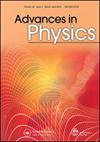透明导体的物理学
IF 13.8
1区 物理与天体物理
Q1 PHYSICS, CONDENSED MATTER
引用次数: 92
摘要
透明导体(TCs)是一种具有高透光性和高直流电导电性的材料。这些材料起着至关重要的作用,并使电光、等离子体、生物传感、医学和“绿色能源”等领域的许多应用成为可能。现代应用,例如在触摸屏和柔性显示器领域,要求tc也具有机械强度和柔韧性。温度控制大致可分为均匀温度控制和非均匀温度控制两类。均匀TC可以看作是等离子体频率位于红外频率范围内的传统金属(或电子等离子体)(例如透明导电氧化物)或具有大等离子体频率的超薄金属(例如石墨)。非均匀TC的物理性质要复杂得多,可能涉及由于折射(包括等离子体)引起的透射增强,以及电子传递的奇异效应,包括渗透和分形效应。这篇综述将TC性能与潜在的物理现象联系起来。我们从研究TC中遇到的各种现象的理论基础开始。其次,我们考虑均匀电子等离子体,并首先讨论了传统的导电氧化物(如氧化铟锡),回顾了这些经典均匀电子等离子体的优点和局限性。接下来,我们讨论了单层和多层石墨烯作为均匀TC的潜力。在讨论非均匀金属薄膜的部分,我们首先回顾了随机金属网络。这些网络的透明度可以通过等离子体折射效应提高到经典遮光限制之外。电导率很大程度上取决于网络类型,我们首先回顾了由单个金属纳米线组成的网络,其中电导率取决于线间接触和渗透效应。其次,我们回顾了均匀的金属膜网络,它没有渗透效应和接触问题。在需要TC与有源基板(如LED或太阳能电池)高质量电接触的应用中,可以通过采用网络的准分形结构来优化网络性能。我们还考虑了周期性金属网络,其中主动等离子体折射导致了异常光传输现象。我们回顾了这一主题的相关文献,并展示了利用这一策略的网络(生物启发叶脉(LV)网络,混合网络等)。最后,我们回顾了具有附加功能的“智能”tc,例如光干涉,超材料效应,内置半导体及其结。本文章由计算机程序翻译,如有差异,请以英文原文为准。
Physics of transparent conductors
Transparent conductors (TCs) are materials, which are characterized by high transmission of light and simultaneously very high electrical DC conductivity. These materials play a crucial role, and made possible numerous applications in the fields of electro-optics, plasmonics, biosensing, medicine, and “green energy”. Modern applications, for example in the field of touchscreen and flexible displays, require that TCs are also mechanically strong and flexible. TC can be broadly classified into two categories: uniform and non-uniform TC. The uniform TC can be viewed as conventional metals (or electron plasmas) with plasma frequency located in the infrared frequency range (e.g. transparent conducting oxides), or ultra-thin metals with large plasma frequency (e.g. graphen). The physics of the nonuniform TC is much more complex, and could involve transmission enhancement due to refraction (including plasmonic), and exotic effects of electron transport, including percolation and fractal effects. This review ties the TC performance to the underlying physical phenomena. We begin with the theoretical basis for studying the various phenomena encountered in TC. Next, we consider the uniform TC, and discuss first the conventional conducting oxides (such as indium tin oxide), reviewing advantages and limitations of these classic uniform electron plasmas. Next, we discuss the potential of single- and multiple-layer graphene as uniform TC. In the part of the paper dealing with non-uniform metallic films, we begin with the review of random metallic networks. The transparency of these networks could be enhanced beyond the classical shading limit by the plasmonic refractive effects. The electrical conduction strongly depends on the network type, and we review first networks made of individual metallic nanowires, where conductivity depends on the inter-wire contact, and the percolation effects. Next, we review the uniform metallic film networks, which are free of the percolation effects and contact problems. In applications that require high-quality electric contact of a TC to an active substrate (such as LED or solar cells), the network performance can be optimized by employing a quasi-fractal structure of the network. We also consider the periodic metallic networks, where active plasmonic refraction leads to the phenomenon of the extraordinary optical transmission. We review the relevant literature on this topic, and demonstrate networks, which take advantage of this strategy (the bio-inspired leaf venation (LV) network, hybrid networks, etc.). Finally, we review “smart” TCs, with an added functionality, such as light interference, metamaterial effects, built-in semiconductors, and their junctions.
求助全文
通过发布文献求助,成功后即可免费获取论文全文。
去求助
来源期刊

Advances in Physics
物理-物理:凝聚态物理
CiteScore
67.60
自引率
0.00%
发文量
1
期刊介绍:
Advances in Physics publishes authoritative critical reviews by experts on topics of interest and importance to condensed matter physicists. It is intended for motivated readers with a basic knowledge of the journal’s field and aims to draw out the salient points of a reviewed subject from the perspective of the author. The journal''s scope includes condensed matter physics and statistical mechanics: broadly defined to include the overlap with quantum information, cold atoms, soft matter physics and biophysics. Readership: Physicists, materials scientists and physical chemists in universities, industry and research institutes.
 求助内容:
求助内容: 应助结果提醒方式:
应助结果提醒方式:


